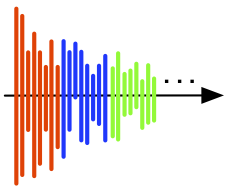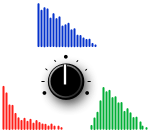Keun
Sup Lee / Projects
![]()
 |
Switched
Convolution Reverberator [Fall 2009]
[homepage] / presented at the 127th AES Convention The Switched Convolution Reverberator is an artificial reverberator having low memory requirements and small computational cost. The reverberator consists of an equalized comb filter driving a convolution with a short noise sequence. The reverberator equalization and decay rate are controlled by low-order IIR filters, and the echo density is that of the noise sequence. To reduce an unwanted periodicity at the comb filter delay length due to a repetition of noise sequences, the noise sequence is regularly updated or “switched.” In this way, this structure is efficient and readily generates high echo densities. Several structures for updating the noise sequence, including a leaky integrator sensitive to the signal crest factor, and a multi-band architecture, are described. |
 |
Approximating
Measured Reverberation Using
A Hybrid Convolution Structure [spring
2010]
[homepage] / presented at DAFx-2010 An efficient reverberator structure is proposed for approximating measured reverberation. A fixed convolution matching the early portion of a measured impulse response is crossfaded with a switched convolution reverberator drawing its switched convolution section from the late-field of the measured impulse response. In this way, the early portion of the measured impulse response is precisely reproduced, and the late-field equalization and decay rates efficiently approximated. To use segments of the measured impulse response, the switched convolution structure is modified to include a normalization filter to account for the decay of the late-field between the nominal fixed/switched crossfade time and the time of the selected segment. This structure provides psychoacoustically accurate synthesis of the measured impulse response using less than half a second of convolution, irrespective of the length of the measured impulse response. In addition, the structure provides direct control over the equalization and late-field frequency dependent decay rate. |
 |
A
Reverberator with Two-Stage Decay and Onset Time Controls [Fall
2010]
[homepage] / will be presented at the 129th AES Convention An efficient artificial reverberator having two-stage decay and onset time controls is presented. A second-order comb filter controlling the reverberator frequency-dependent decay rates and onset times drives a switched convolution with short noise sequences. In this way, a non-exponential reverberation envelope is produced by the comb filter, while the switched convolution structure produces a high echo density. Several schemes for generating two-stage decays and onset time controls with different onset characteristics in different frequency bands are described. |